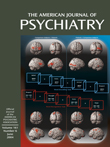An 11-year-old brain-damaged boy in my clinic episodically attacked his mother. He described feeling remorseful afterwards and apologized, but the attacks increased in frequency. He had been bullied and exposed to media violence, and he described frightening hallucinations and depersonalization when he felt trapped and helpless. There had been some response to risperidone, albeit with akathisia, sedation, and weight gain.
This extensively referenced collection of comprehensive reviews by multiple contributors was helpful in thinking about my patient, with some exceptions. The book is to be commended for its broad coverage, ranging from theory to practice, from laboratory bench to barstool to swing set, from molecule to society and back. The contributors reveal that “aggression” is not unitary. Rat paradigms seem to correlate with abnormalities of specific neurotransmitters, brain regions, pathways, cells, and points in development. Human aggression is much more complex, involving personal history (especially of abuse and neglect) and decision-making processes. Aggression can be seen as a normal phenomenon, as well as from the points of view of pathology, ethology, and evolution. Interpersonal conflict and ethnic riots generally have no single cause and occur in contexts. The media contribute, and “the United States, as the largest manufacturer and exporter…has an obligation to the ‘global village’ to provide more research” into its effects (p. 247).
A cognitive behavior therapy program addresses the attribution of one’s own hostile intent to others. The notion of the “cognitive script,…a map of what will probably happen” (p. 277) would suggest the need for a separate chapter on memory, formally discussed only in the context of the dementias.
A few chapters reiterate the inadequacies of checklists, self-reports, and descriptive diagnostic schemes such as the DSM; there is no “gold standard definition” of aggression. No single deficit or gene corresponds directly to aggressive behavior. The few well-controlled drug studies show mixed results, with all-too-frequent iatrogenic exacerbation of aggression, perhaps from intolerable bodily feeling states. Research lags behind clinical practice.
The careful reader will be rewarded but will probably miss a final summary chapter or a dialogue among the contributors to help with integration. The field lacks a common research and clinical language and a seamless continuum from molecule to personality. It would be helpful to have more detailed illustrations, particularly of neurotransmitter pathways and limbic and frontal areas, and more detailed exposition on inositol and on the serotonin receptor subtypes, apparently particularly central to pharmacological approaches.
I would also like to have seen a chapter from the perspective of the individual’s experience. Feeling unbearably guilty regarding the effect of his disability on his entire family, my patient would isolate himself in a tight space; then, hallucinating the devil attacking him, he would attack rather than be attacked. At times, however, the recalling of a loving family member would seem to abort an attack. Early psychoanalytic writers, who described the balancing of aggressive and libidinal drives and the importance of memory and the superego in different forms of aggression, continue to challenge researchers to match the complexity and usefulness of this early model.

